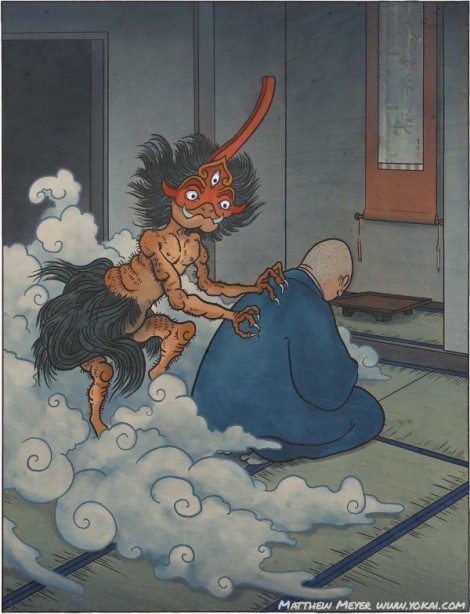Only 3 short days left for The Hour of Meeting Evil Spirits on Kickstarter! Don’t miss out on your chance to get a collector’s edition hardcover, original paintings and prints, and have your name immortalized as a backer in the credits of the book! We just passed the 600% mark, which means our final stretch goal is unlocked: the hardcover slipcase for your collector’s editions! More details over at the Kickstarter…
Sansei (山精, さんせい)
Sansei literally means “mountain sprite,” unspritely as this yokai is. It originally comes from China, where it is known as sanki, or “mountain demon” — though it is not quite demonic either, having no horns.
Sansei has a single foot (like some other mountain spirits we have looked at), but his foot is turned backwards. He lives deep in the mountains and occasionally pays visits to woodcutters’ cottages and steals their salt. Why? To put on crabs, of course! Sansei’s favorite food is stone crab, which he likes to broil and sprinkle with salt to eat. Sansei is sometimes referred to as the leader of all of the animals of the mountains.
Though not very aggressive, they do sometimes attack humans. When this happens, if one calls out, “Hiderigami!” the sansei will flee in terror. However, if one calls out, “Sansei!” instead, that person will meet some horrible fate, such as falling ill or having their house catch on fire.
Nothing else is written about this yokai… but if you notice that your salt has gone missing, check your trash bin for crab shells!







